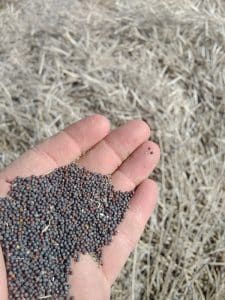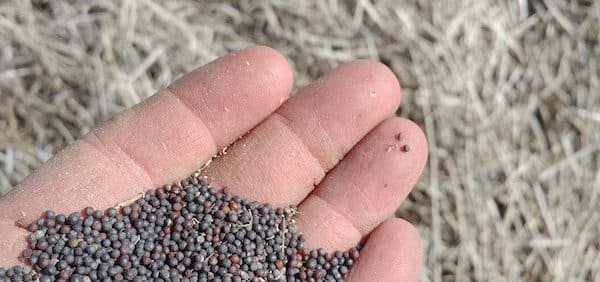Alberta still has close to one million unharvested acres as of this week. Saskatchewan and Manitoba also have unharvested acres.
Here are some considerations for those acres:
1. What are the options for fields that still have last year’s wheat flat on the ground? Of course ideally, this wheat should be chopped up and spread properly. The combine would be the best tool for the job — but the crop and field have to be dry. They must also be dry to get any possible benefit from a discer. Harrowing requires very dry conditions and could create a big mess with that much residue. Burning would seem an option — again, once the crop is dry — but regulations, including permits and firebreaks, tend to limit its use. Another possibility: Since the first pass in heavy residue tends to be the easiest, direct seeding might make the best of a less-than-ideal situation — as long as the drill can penetrate for good seed to soil contact.

2. While waiting for fields to dry up, hand-thresh a few samples to see if the field is worth combining. You could send these samples to the CGC sample program.
3. Alberta’s crop insurance deadline for “quality” coverage for canola is May 31. That’s still a month away but if the wettest and worst-drained fields might not be ready by then, would an alternative shorter-season crop be better for that field? If yes, shopping now for seed might provide the best selection.
4. Oilseed processors will still accept 2016 canola harvested in spring 2017 if it meets their standards (which may vary between processors). Bring in an accurate, representative sample for them to assess. Find a map of processors here.
5. Weed control in fields not harvested. Harvest first, then spray. Spraying unharvested crop is off label and pesticide residues in harvested seed will be an issue. As well, weeds under the swath will not be accessible — and that could be where the big weed populations are. We’re talking volunteer canola.

